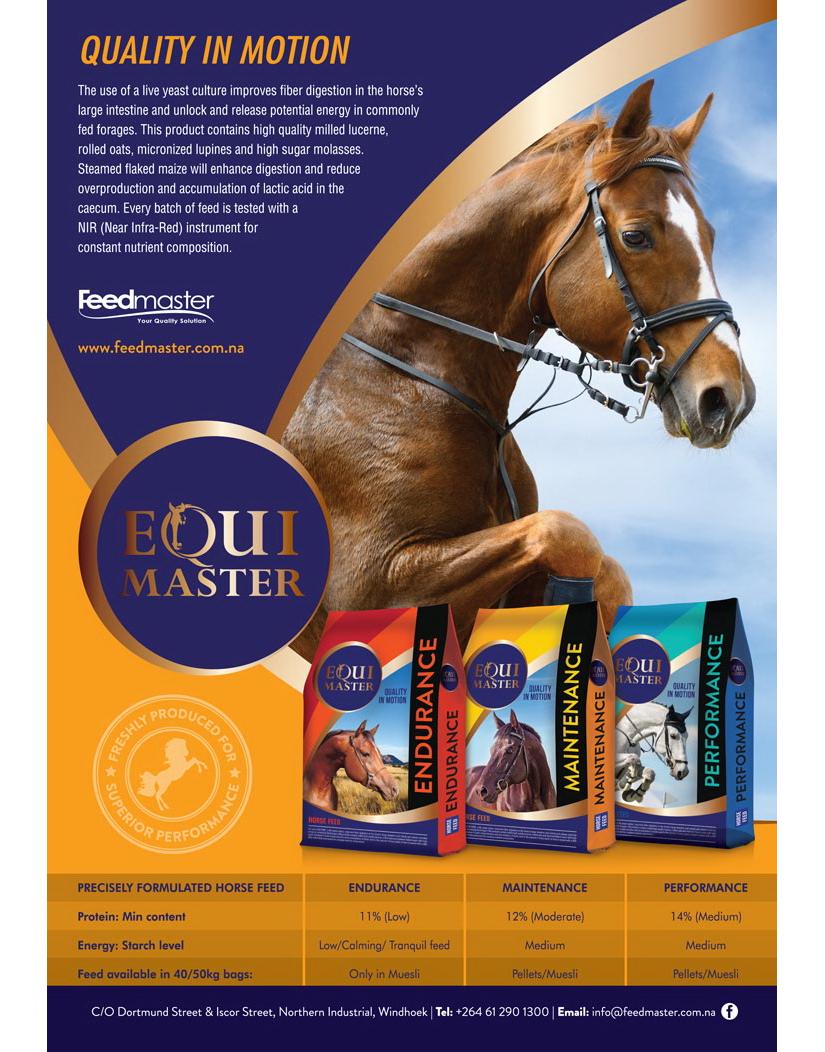
In today’s horse riding community there is a fine line between a winner and just another competitor. With the latest research and technology at our fingertips, formulating the best diet for every discipline becomes both harder and easier. However sorting through this myriad of information is best left to the nutritionist. This being said, the importance of the practical art of feeding an individual horse for optimum performance cannot be overlooked and is essential in retaining the competitive edge no matter the precision of the feeding instructions given by the nutritionist. This article aims to shed some light on some of the aspects of horse feeding generally accepted but seldom questioned.
Energy sources used in different feeds
The use of fat as an energy source in the diet of high performing horses has two main purposes:
-
It conditions the horse to utilize fat stores more effectively
-
It helps to adapt the enzymes involved to ensure more efficient fat metabolism
Fat is the primary source for energy for horses during long bouts of exercise such as endurance races. If the horse is adapted to more efficient fat metabolism, it is likely that fat stores will be utilised much more efficiently when energy is required during a long distance ride.
Starch is the main energy source for horses used in events requiring short bursts of high energy such as dressage, show jumping and eventing. It is however important to remember that the primary source of nutrients must still be obtained from roughage.
Why do we formulate with different protein levels?
Protein is made up out of amino acids which forms the building blocks for all body tissues. Amino acids are involved in many of the bodily functions such as, the synthesis and release of hormones, the synthesis of neurotransmitters and enzymes, and the regulation of sleep appetite and blood pressure to name only a few. The main function is the repair and maintenance of muscles and other soft tissue within the body. When protein is broken down, large amounts of heat is generated which will lead to excessive sweating (with a resultant loss in electrolytes) and possibly heat exhaustion during hard and prolonged work especially in warmer climate conditions. For long distance athletes-Equimaster Endurance-will supply the required protein without causing an overload of protein in the system.
For horses in strenuous training a higher protein level should be fed in order to supply all the amino acids required for building and maintenance of muscle. Providing feed containing protein sources of good quality, such as-Equimaster Performance, will supply the building blocks required to build a good top-line in competition horse as well as supplying enough protein for the pregnant or lactating mare to ensure proper foetal growth and adequate milk supply. This feed can also be fed to young growing stock as the higher protein level will ensure growth to the full genetic potential of each individual.
Feedmaster’s-Equimaster Maintenance-is a versatile feed that can be used for all horses. It is perfect for stabled and working horses. Adequate protein and starch levels assure a balanced meal every day.-
The use of Vitamin C in horse diets
Vitamin C is included in the diet as it plays a vital role in neutralizing harmful free radicals as it boosts the role of vitamin E. Free radicals are produced when nutrients are oxidized during muscular contraction. When the horse is doing exercise the production of these free radicals increase as the oxidation of nutrients increase to fuel muscle contraction. And increase in free radicals can lead to fatigue, damage to DNA as well as other degenerative changes in body tissue.
The increase in the antioxidant capacity within the body blocks the damage done to fatty acids caused by free radicals and reduce the oxidative damage to cells. Vitamin C can be synthesized in the liver from glucose but this pathway is sometimes inadequate and more inefficient. Vitamin C is also required for the synthesis of certain amino acids.
The use of live yeast cultures in horse feed
All equines are hindgut fermenters and rely on a balanced, well adapted microbial population in the hindgut to ensure that the nutritional demand is met. Microbes in the hindgut will ferment fibre fractions to energy yielding compounds, mostly volatile fatty acids, which is then absorbed and utilised by the host. If this microbial population gets disrupted, high starch levels, decrease in pH and subclinical acidosis, efficient fermentation becomes impossible and cellulose and hemicellulose can no longer be broken down. Yeast is a unicellular organism which is naturally resistant to antibiotics and acts as a probiotic in the equine diet. Probiotics are live microbial feed additives which beneficially affect the host by improving its intestinal microbial balance. This leads to improved fermentation and therefore digestibility of the diet as well as higher availability of minerals in the diet.-
All-Equimaster-products are formulated to contain optimal levels of protein required for different disciplines as well as added Vitamin C and a live yeast culture to maintain equine health and performance.
